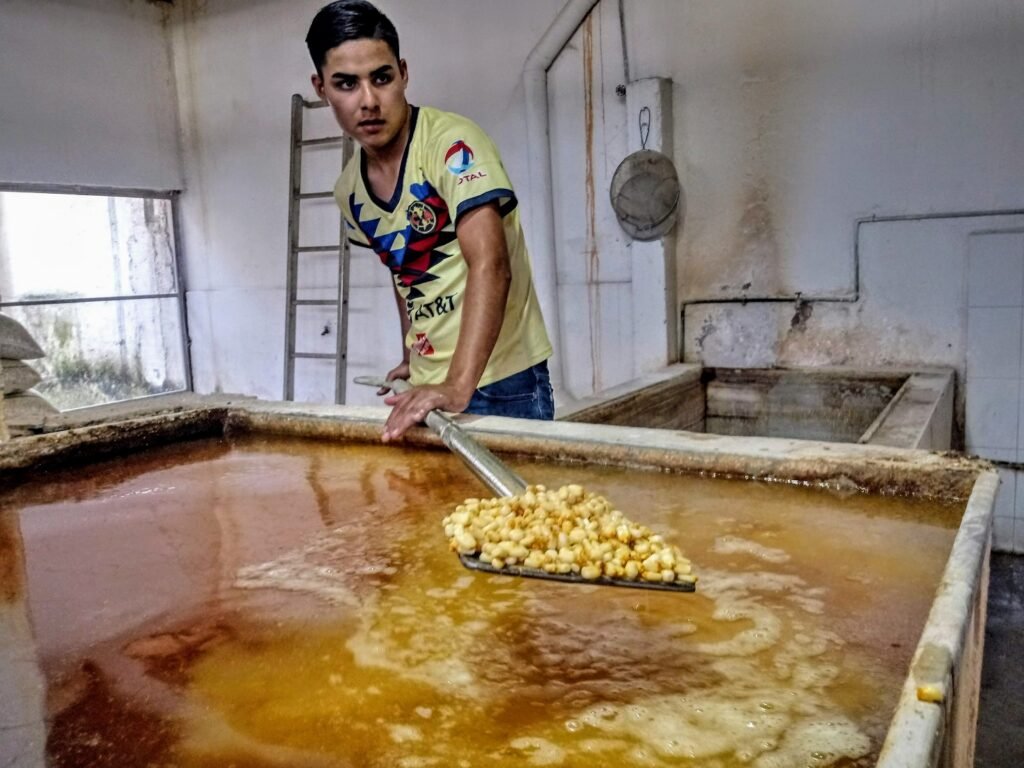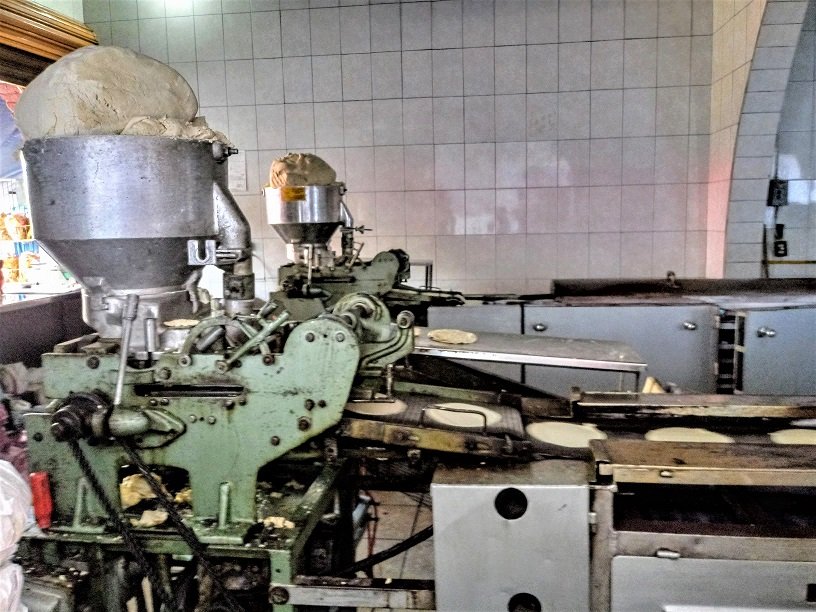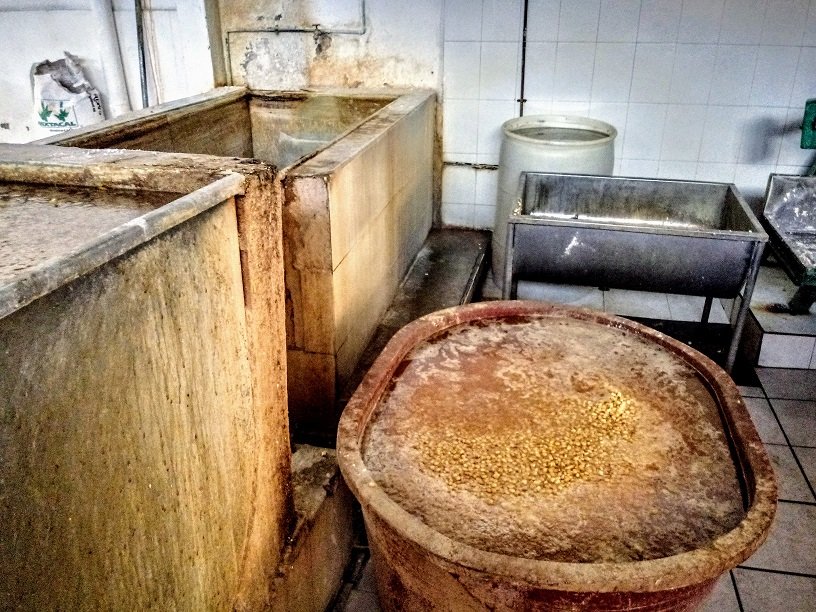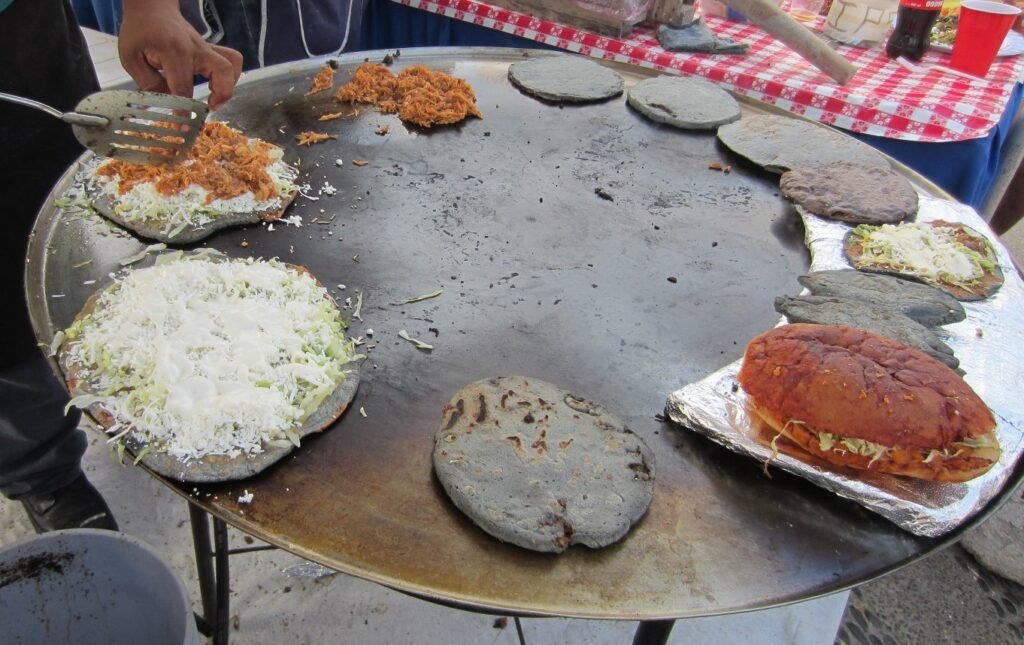Alex has worked in his family’s tortillaria in El Tuito since he was ten. He happily greets me whenever I bring folks by to see the whole process of making tortillas.
The first stop is the back room, where 5-kilogram bags of dried kernels are stacked floor to ceiling as a testament to the thousands of tortillas they produce daily. He tells us the best corn for making tortillas is from Sinaloa, Mexico. Most corn grown around Vallarta is field corn, best used for animal feed.
Corn or maize (Zea mays) is thought to have been domesticated in Mesoamerica over 7000 years ago from a wild grass known as teosinte. There are more than 42 different types of maize in Mexico, each of which has several varieties whose number is estimated at more than 3000! The characteristics of each variety depend upon soil conditions, humidity, altitude, and how it is cultivated.
The word maize is derived from the indigenous Nahuatl language and is used universally for this agricultural crop.
There are three cement gas-fired soaking tubs full of maize. One tub holds eight bags or 40 kilograms of the Sinaloa corn. The corn soaks and cooks in the heated water for about eight hours. Limewater (calcium hydroxide) is added to the water to alkalinize it in an ancient process created by the Aztec and Mayan civilizations known as nixtamalization.
This removes almost all of the aflatoxins from mold-contaminated corn. It also helps unlock proteins and remove the husks so the corn can be more easily ground. Corn not nixtamalized has led to niacin deficiencies known as pellagra and protein malnourishment such as kwashiorkor.
After cooking, the kernels are washed and ready for grinding. This prepared grain, called nixtamal or hominy, is sold at the tortillaria for making pozole, menudo, and other foods. The masa, or ground dry flout, is used for tamales. After mixing with a bit of water, the dough is made into huge dough balls for introduction into the hopper of the tortilla
machine.

Tortillas are then ejected onto a conveyor belt, passed over gas flames, and delivered as perfectly round, thin tortillas. Alex’s family, the Silva’s, have four tortillarias in Tuito, making about 40,000 tortillas a day. One kilo is about 36 tortillas.
Tortillas are available to the families in town and delivered by car, truck, moto, and bus to the entire Cabo Corrientes region.
Blue corn tortillas are sometimes available when the Tarahumara Maize Azul flour is available. In addition to the daily staple of tortillas, maize is also used in many Mexican dishes, including tamales, atole, tacos, chilaquiles, enchiladas, tostadas, quesadillas, and posole.
Here in Vallarta, there are numerous neighborhood tortillarias. You can hear the machines grinding away as you approach. It’s a hot, noisy job, so I always buy a few tortillas and say hello to the folks working there. They may offer you a free hot tortilla and a salt shaker to bring out the taste.
Tortillarias that use wheat flour instead of corn are hard to find. The production process and equipment are different. The Emiliano Zapata Mercado has a large tortillaria for corn only. A few blocks away is the wheat flour tortillaria.
Of course, if you are adventurous, you can try making your own tortillas using a hand press. This is a tricky process. If the dough is too dry, it will crumble and fall apart. If it is too wet, it will stick to the press. To watch how this is done, visit the loncheria in the Emiliano Zapata Mercado, where handmade tortillas are offered daily.





